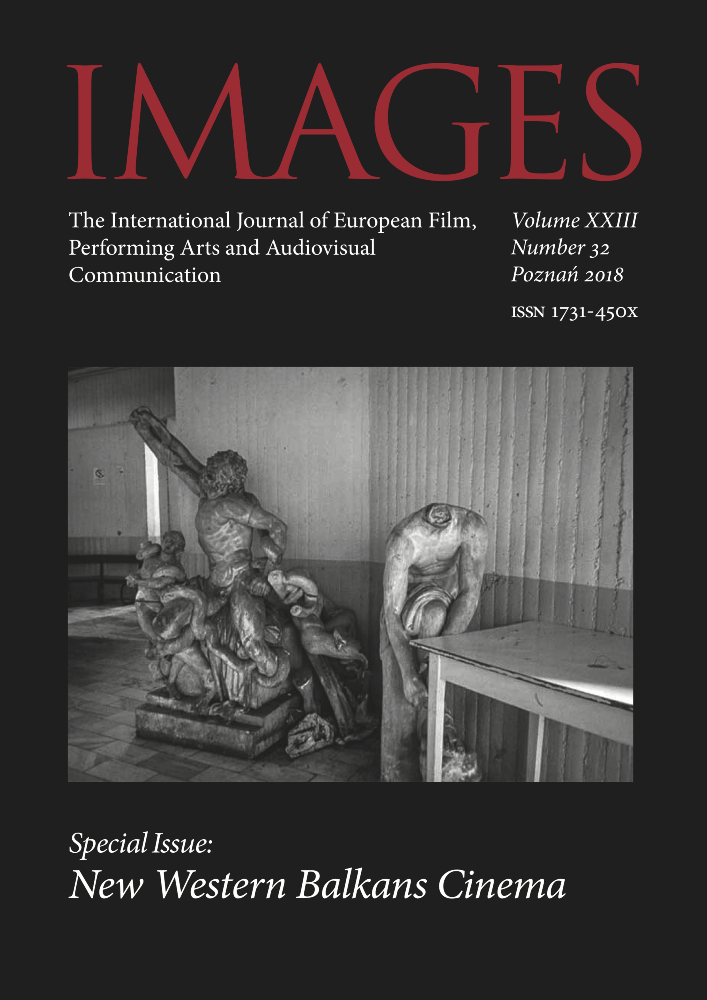Abstract
The paper demonstrates the prominence of network narratives (films with several autonomous storylines, globally popular since the mid-1990s) in post-Yugoslav, particularly Croatian, cinema, with examples such as Metastases (2009), The Reaper (2014), You Carry Me (2015), The Constitution (2016), The Trampoline (2017), etc. Unlike network narratives elsewhere, these films often thematize history, with parallel stories typically set during World War II and the Yugoslav Wars of the 1990s. This has been said to suggest as a circular, synchronic vision of history, a “transhistorical dance macabre” as a leitmotif of Balkan cinema. The films Witnesses (2003) and The High Sun (2015), together with a group of multi-narrative plays, i.e. The Last Link (1994), 3 Winters (2014) and Men of Wax (2016), are analysed as vehicles of counter-memory to such self-Balkanizing representations.
References
Azcona del Mar M., The Multi-Protagonist Film, Chichester-West Sussex 2010 Bahtin M., O romanu, Beograd 1989.
Bordwell D., Lessons from Babel, “David Bordwell’s website on Cinema” 2006, <http://www.davidbordwell.net/> [accessed on: 10.12.2017].
Bordwell D., Poetics of Cinema, New York-London 2008.
Bordwell D., The Way Hollywood Tells It: Story and Style in Modern Movies, Berkeley 2006.
Cameron A., Modular Narratives in Contemporary Cinema, Basingstoke-New York 2008.
Everett W., Fractal films and the architecture of complexity, “Studies in European Cinema” 2005, no. 2 (3).
Jelača D., Dislocated Screen Memory: Narrating Trauma in Post-Yugoslav Cinema, London 2015.
Kaštelan L., Četiri drame, Zagreb 1997.
Kerr P., Babel’s network narrative: packaging a globalized art cinema, “Transnational Cinemas” 2010, no. 1(1), pp. 37–51.
LaCapra D., Writing History, Writing Trauma, Baltimore 2001.
Levi P., Raspad Jugoslavije na filmu. Estetika i ideologija u jugoslovenskom i postjugoslovenskom filmu, „Biblioteka XX vek“, Beograd 2009.
Mate M., Ljudi od voska, Zagreb 2016.
Mileta S., Zvizdan, transhistorijski danse macabre, „Filmonaut” 2016, no. 16, pp. 81–85.
Pavičić J., Postjugoslavenski film. Stil i ideologija, Zagreb 2011.
Peterlić A., Omnibus-film, in: Filmska enciklopedija II, ed. A. Peterlić, Zagreb 1990 Puzzle Films: Complex Storytelling in Contemporary Cinema, ed. W. Buckland, Chichester-West Sussex and Malden 2009.
Simons J., Complex narratives, “New Review of Film and Television Studies” 2008, no. 6 (2), pp. 111–126.
Staiger J., Complex Narratives. An Introduction, “Film Criticism” 2006, no. 31(1–2), pp. 2–4.
Štivičić T., Tri zime, Zagreb 2016.
Thanouli E., Post-classical narration. A new paradigm in contemporary cinema, “New Review of Film and Television Studies”, no. 1(3), pp. 183–196.
Tomić J., Filmske teorije moderniteta i tehnike mrežne naracije u švedskom filmu, unpublished doctoral dissertation, Zagreb 2012.
Tomić J., Mrežna naracija, “Hrvatski filmski ljetopis” 2016, no. 22 (88), pp. 79–100 Tomić J., Nätverksberättande i film och litteratur, in: Litteratur och film: Samband och samspel ur skandinaviskt perspektiv, ed. E. Nyström, Tartu 2011.
Tröhler M., Offene Welten ohne Helden. Plurale Figurenkonstellationen im Film, Marburg 2007.
License

This work is licensed under a Creative Commons Attribution-NonCommercial-NoDerivatives 4.0 International License.
